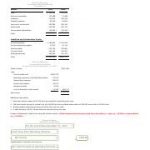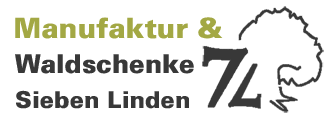Financial Statements for Small Business Owners

They are interrelated, as the performance and financial activities captured in the income statement and statement of cash flows affect the balance sheet and statement of stockholders’ equity. The balance sheet, lists the company’s assets, liabilities, and equity (including dollar amounts) as of a specific moment in time. That specific moment is the close of business on the date of the balance sheet.

Statement of Retained Earnings (or Owner’s Equity)
Cash flow gives you insights into your business’s sources and uses of cash. Maintaining a healthy cash balance – aka, enough but not too much – is mission-critical. Shareholders’ equity is money that belongs to the company’s owners (equity shareholders) and preference shareholders. Balances of current liabilities like accounts payable and long-term liabilities like bonds appear here. Calculate the closing balance in stockholders’ equity and input this figure into the balance sheet.
For example, if the company revalues an asset and it’s worth less, it’s the company’s loss. Our mission is to empower readers with the most factual and reliable financial information possible to help them make informed decisions for their individual needs. Our goal is to deliver the most understandable and comprehensive explanations of financial topics using simple writing complemented by helpful graphics and animation videos. We follow strict ethical journalism practices, which includes presenting unbiased information and citing reliable, attributed resources. At Finance Strategists, we partner with financial experts to ensure the accuracy of our financial content. Finance Strategists has an advertising relationship with some of the companies included on this website.
Once finalized, the financial statements are presented to the company’s management, board of directors, and other stakeholders. The first step in financial statement preparation is identifying and gathering relevant financial data from a company’s accounting records. This process involves collecting information on transactions, such as sales, expenses, investments, and borrowings, and organizing it in a systematic manner. The statement of cash flows adds all cash inflows and outflows to find the net change in cash for a period. The ending cash balance of the cash flow statement should be equal to the ending mark to market accounting cash balance in the balance sheet. Understanding your company’s financial position is integral to ensuring its success.
Step 3: Prepare the Balance Sheet
Remember that the trial balance doesn’t find other types of errors such as amounts posted in the wrong account. The next step is to post journal entries to sub-ledger accounts, which are accounts that record details and provide more context than the overarching general ledger. Sales transactions are posted to the sales ledger, credit sales are recorded in the accounts receivable ledger, and so on – you get the idea.
Understanding the Income Statement
- Management is interested in the cash inflows to the company and the cash outflows from the company because these determine the company’s cash it has available to pay its bills when due.
- However, nonprofit organizations do not have shareholders and do not pay out profits.
- It shows the company’s ability to generate profits by measuring the difference between revenues and expenses.
- A company’s debt level might be fine for one investor, while another might have concerns about the level of debt for the company.
- After you process all of your financial statements, you can use the information to track your business’s financial health and make smart, informed financial decisions for your company.
Here is an example of Paul’s Guitar Shop, Inc.’s financial statements based on his adjusted trial balance in our previous example. For instance, banks often want basic financials to verify the a company can pay its debts, while the SEC required audited financial statements from all public companies. Auditors play a crucial role in financial statement preparation by providing assurance on the accuracy, reliability, and compliance of financial statements. Ratio analysis is a fundamental tool in financial statement analysis that involves calculating various financial ratios to assess a company’s performance, liquidity, solvency, and efficiency. These ratios include liquidity ratios, solvency ratios, profitability ratios, and efficiency ratios. IFRS is a set of accounting standards developed by the International Accounting Standards Board (IASB) for use in over 140 countries.
Your cash flow statement, or statement of cash flows, is all of your business’s incoming and outgoing cash. Basically, your cash flow statement shows you how much cash flows in and out of your business. Your statement of cash flows only records the actual cash your company has. Financial statements are prepared by transferring the account balances on the adjusted trial balance to a set of financial statement templates. We will discuss the financial statement form in the next section of the course. Financial statement preparation is a critical component of a company’s financial management, providing a comprehensive overview of its financial performance, position, and cash flows.
An original or historical cost of accounts can help you prepare financial statements. Typically, you record prices and assets you purchase at different times at the original cost. The statement of owner’s equity is a summary of the business owner’s investment in the business. It shows any capital the owner put into the business, any withdrawals made as a salary, and the net income or net loss from the current period. This is one reason the income statement has to be prepared first because the calculations from that statement are needed to complete the owner’s equity statement. Generally Accepted Accounting Principles (GAAP) are the rules by which publicly-owned United special revenue fund procedures States companies must prepare their financial statements.
If a company has subsidiaries or other related entities, it may need to prepare consolidated financial statements. If you identify an error or discrepancy in your financial statements, take the time to revise your accounting procedures. Ultimately, the best way to increase the accuracy and dependability of your financial statements is to automate the process wherever possible. Your business must produce a majority of its net income from operating income activities because operating income is sustainable. Now that you understand the concept of financial statements, let’s look at the various reports that make up financial statements. Learn the importance of the order of financial statements in small business accounting.
The four main types of audit opinions are unqualified, qualified, adverse, and disclaimer of opinion. An unqualified opinion indicates that the financial statements are fairly presented and comply with the relevant accounting standards. Consistency is the practice of using what is a flexible budget the same accounting methods and policies from one accounting period to another. You can generate operating income from day-to-day business activities. Your company also earned non-operating income, including $2,000 in interest income and $4,000 from an equipment sale.


